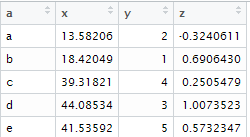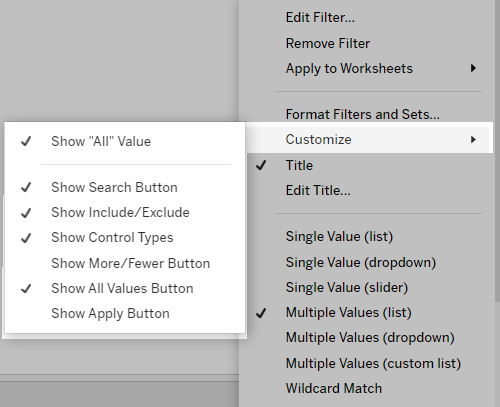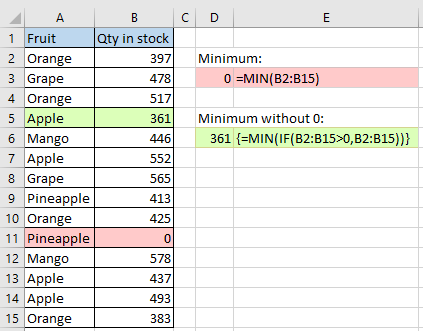How To Exclude Values In R
When working with data in R, you may come across situations where you need to exclude certain values from your analysis or visualization. Excluding values allows you to focus on specific subsets of your data and remove any outliers or missing values that might hinder your analysis. In this article, we will explore various techniques and functions in R that will help you exclude values effectively.
1. Filtering out Specific Values using Conditional Statements
One common scenario is when you want to exclude specific values from your dataset based on certain conditions. R provides a powerful feature called conditional statements that allow you to filter out values based on criteria.
For example, suppose you have a dataset containing information about students’ grades. If you want to exclude all the students who scored below a certain threshold, you can use the following code:
“`R
filtered_data <- original_data[original_data$grade >= threshold, ]
“`
This code creates a subset of `original_data` where only rows with grades greater than or equal to the specified threshold are retained in `filtered_data`. You can modify the condition according to your requirements.
2. Excluding Missing Values from your Data
Missing values can significantly impact the accuracy and reliability of your analyses. To exclude missing values in R, you can use the `na.omit()` function. This function removes any rows with missing values from your dataset.
“`R
clean_data <- na.omit(original_data)
```
The `clean_data` will only contain the rows from `original_data` that do not have any missing values. However, keep in mind that removing missing values may reduce the size of your dataset and potentially affect the overall analysis.
3. Removing Outliers through Value Exclusion Techniques
Outliers can distort your data and lead to skewed results. To exclude outliers from your dataset, you can use various methods such as the Z-score, standard deviation, or boxplot analyses.
For example, to remove outliers using the Z-score method, you can follow these steps:
- Calculate the Z-scores for each value in your dataset.
- Set a threshold for the Z-score, typically above 3 or below -3.
- Exclude any values that exceed the threshold.
```R
z_scores <- scale(original_data)
clean_data <- original_data[abs(z_scores) < threshold, ]
```
Make sure to adjust the threshold based on your specific dataset and analysis requirements.
4. Excluding Values Based on Specific Criteria or Conditions
You may want to exclude values from your data based on specific criteria or conditions. The `subset()` function in R allows you to create subsets of your dataset based on logical conditions.
For example, if you have a dataset with different animal species and you only want to exclude values belonging to a particular species, you can use the following code:
```R
clean_data <- subset(original_data, species != "cat")
```
This code creates a subset of `original_data` where only rows with a species different from "cat" are retained in `clean_data`.
5. Excluding Particular Values from Categorical Variables
Categorical variables often require excluding particular values to focus on specific groups. To exclude certain values from a categorical variable in R, you can use the `factor()` function.
```R
clean_data <- original_data[original_data$color != "red", ]
```
This code excludes rows from `original_data` where the color variable is equal to "red" and retains only the remaining rows in `clean_data`.
6. Utilizing Logical Operators to Exclude Multiple Values Simultaneously
In some cases, you may want to exclude multiple values simultaneously based on certain criteria. R provides logical operators such as `&` (AND) and `|` (OR) that allow you to combine conditions and filter your data accordingly.
For example, if you want to exclude rows where the age is less than 18 or the gender is not "female," you can use the following code:
```R
clean_data <- original_data[!(original_data$age < 18 | original_data$gender != "female"), ]
```
This code creates a subset of `original_data` where rows are only retained if the age is not less than 18 and the gender is "female".
7. Managing Excluded Values and Potential Implications in your Analysis
When excluding values from your data, it is important to consider the potential implications it may have on your analysis. Removing values can alter the distribution or characteristics of your dataset, possibly leading to biased results or incomplete interpretations.
It is crucial to document and justify why certain values were excluded from the analysis. Additionally, sensitivity analyses can be performed to assess the impact of excluding values on the overall conclusions.
FAQs
Q: How do I exclude variables in R?
A: To exclude variables in R, you can either remove them manually using the `$` operator or use the `select()` function from the `dplyr` package.
Q: How do I exclude a list of values in R?
A: To exclude a list of values from a dataset in R, you can use the `!` operator along with the `%in%` operator. For example: `clean_data <- original_data[!(original_data$column %in% c("value1", "value2")), ]`.
Q: How do I exclude outliers in R?
A: There are multiple techniques to exclude outliers in R, such as using the Z-score, standard deviation, or boxplot analysis. You can exclude values exceeding a certain threshold derived from these methods.
Q: How do I exclude rows in R?
A: To exclude specific rows from a dataset in R, you can use logical conditions or filtering techniques. For example: `clean_data <- original_data[original_data$column != "value", ]`.
Q: How do I exclude data from a plot in R?
A: To exclude specific data from a plot in R, you can use the `subset()` function or logical conditions while creating the plot. For example: `plot(data$X, data$Y, subset = data$group != "A")`.
Q: What does na.exclude do in R?
A: The `na.exclude()` function is used for handling missing values in R. It replaces the missing values with `NA` and keeps them in the dataset for subsequent analysis.
Q: How do I exclude columns in R?
A: To exclude specific columns from a dataset in R, you can subset the dataset by selecting only the columns you want to include. For example: `clean_data <- original_data[, -c(3, 5)]` will exclude columns 3 and 5 from `original_data`.
Q: How do I remove values from a column in R?
A: To remove specific values from a column in R, you can subset the dataset based on a condition that excludes those values. For example: `clean_data <- original_data[original_data$column != "value", ]`.
In conclusion, excluding values in R is a crucial step in data analysis to focus on specific subsets, remove outliers, or handle missing values. Understanding the various techniques and functions available in R will enable you to clean and manipulate your data effectively for accurate and reliable analysis and visualization.
How To… Exclude Columns From A Dataframe In R #63
Keywords searched by users: how to exclude values in r how to exclude variables in r, how to exclude a list of values in r, how to exclude outliers in r, how to exclude rows in r, how to exclude data from a plot in r, na.exclude in r, how to exclude columns in r, how to remove values from a column in r
Categories: Top 44 How To Exclude Values In R
See more here: nhanvietluanvan.com
How To Exclude Variables In R
When working with large datasets in R, it is common to come across scenarios where certain variables need to be excluded from analysis. This could be due to various reasons such as irrelevance, redundance, or the presence of missing values. In this article, we will explore different methods to exclude variables in R, ensuring that your data analysis is efficient and accurate.
Methods to Exclude Variables:
1. Subset: One of the simplest ways to exclude variables in R is by using the subset() function. This function allows you to create a new dataframe containing only the variables you desire. For instance, to exclude the variables “var1” and “var2” from your dataframe “df”, you can use the following code:
“`R
new_df <- subset(df, select = -c(var1, var2))
```
2.[, -c()]: Another method to exclude variables in R is by using the square bracket notation. This method is particularly handy when you have a large number of variables to exclude. For example, if you wish to exclude variables "var1," "var2," and "var3" from your dataframe "df", you can use the following code:
```R
new_df <- df[, -c(var1, var2, var3)]
```
Now that we have explored the basic methods to exclude variables in R, let's dive deeper and tackle more specific scenarios.
Excluding Variables by Name or Index:
If you prefer to exclude variables based on their position or index, rather than their names, you can use the following approaches:
1. Excluding by Name:
```R
new_df <- subset(df, select = -c("var1", "var2"))
```
2. Excluding by Index:
```R
new_df <- df[, -c(1, 2)]
```
In the example above, "var1" and "var2" were excluded by name and index respectively.
Excluding Variables by Condition:
Sometimes, you may want to exclude variables based on certain conditions. For instance, if you have a large number of variables and want to exclude those with a high percentage of missing values, you can follow these steps:
1. Calculate the proportion of missing values for each variable:
```R
missing_prop <- colMeans(is.na(df))
```
2. Set a threshold value for the proportion of missing values, below which a variable will be excluded. For example, let's consider a threshold of 0.6 (60%).
3. Exclude variables based on this threshold:
```R
new_df <- df[, -which(missing_prop > 0.6)]
“`
In this case, variables with missing value proportions greater than 0.6 were excluded.
FAQs:
Q1. Can I exclude variables from a dataframe permanently?
A: No, excluding variables using the methods mentioned above creates a new dataframe without the excluded variables, while leaving the original dataframe unaffected.
How To Exclude A List Of Values In R
R is a powerful programming language and environment for statistical computing and graphics. It offers a wide array of functions and packages to manipulate and analyze data. One common task in data analysis is excluding certain values from a dataset. In this article, we will explore different methods to exclude a list of values in R, along with some frequently asked questions.
There are several scenarios where excluding specific values becomes vital. For example, when cleaning data, it is often necessary to remove outliers or missing values that could negatively impact analysis. By excluding these values, we can ensure accurate and reliable results. Let’s delve into the various methods available for excluding values in R.
Method 1: Using the subset() Function
The subset() function is a popular choice when excluding values in R. It allows us to filter a dataset based on specific conditions. To exclude a list of values, we need to define a logical condition that identifies the values we want to exclude. Here’s an example:
“`
# Create a sample dataset
data <- c(1, 2, 3, 4, 5, 6, 7, 8, 9, 10)
# Exclude values 3, 6, and 9
excluded_values <- c(3, 6, 9)
filtered_data <- subset(data, !data %in% excluded_values)
# View the filtered data
print(filtered_data)
```
In this code snippet, we define a sample dataset `data` containing numbers from 1 to 10. We create a list of values `excluded_values` consisting of 3, 6, and 9. Finally, we apply the subset() function with the condition `!data %in% excluded_values`, which excludes the specified values. The resulting filtered data only contains the values 1, 2, 4, 5, 7, 8, and 10.
Method 2: Using the "!=" Operator
Another way to exclude values in R is by utilizing the "!=" operator, which checks if two values are not equal. It allows us to filter a dataset based on a condition where values are not in the exclusion list. Here's an example:
```
# Exclude values 3, 6, and 9 using "!=" operator
filtered_data <- data[data != 3 & data != 6 & data != 9]
# View the filtered data
print(filtered_data)
```
In this code snippet, we apply the "!=" operator to exclude values 3, 6, and 9. By specifying multiple conditions separated by "&" operators, we exclude the desired values from the dataset. The resulting filtered dataset only contains the values 1, 2, 4, 5, 7, 8, and 10.
Frequently Asked Questions (FAQs):
Q1: Can I use the "subset()" function with a data frame?
A1: Absolutely! The subset() function can be applied to both vectors and data frames. To exclude values from a specific column in a data frame, you can modify the function like this: `subset(data_frame, !column_name %in% excluded_values)`.
Q2: Are there any other functions or methods to exclude values?
A2: Yes, there are other functions and methods available in R to exclude values, such as using the "which()" function in combination with negation operators, or using the "dplyr" package's `filter()` function. It's important to explore different approaches to find the one that best suits your specific requirements.
Q3: How can I exclude values based on conditions other than an exclusion list?
A3: R offers numerous logical operators and functions to define conditions. You can apply these conditions using various methods like `subset()` function, indexing with logical vectors, or functions like `filter()` from the "dplyr" package.
Q4: Can I exclude multiple lists of values simultaneously in R?
A4: Yes, you can exclude multiple lists of values simultaneously by combining the logical conditions. For example, you can use `!(data %in% excluded_values1 | data %in% excluded_values2)` to exclude values from both `excluded_values1` and `excluded_values2`.
In conclusion, excluding a list of values in R is an important skill in data manipulation and analysis. This article covered two commonly used methods to exclude values using the `subset()` function and the "!=" operator. Understanding these methods can greatly assist in cleaning and refining datasets. Additionally, we explored some frequently asked questions to provide further insights on this topic. With these techniques at your disposal, you can confidently exclude unwanted values and enhance the accuracy of your data analysis in R.
Images related to the topic how to exclude values in r

Found 23 images related to how to exclude values in r theme


















_create-a-subset-data-using-r-subset-in-r-filter-function-from-dplyr.jpg)






























Article link: how to exclude values in r.
Learn more about the topic how to exclude values in r.
- 4.3 Exclude observations with missing data – Bookdown
- Exclude values from data.frame in R – Stack Overflow
- Subsetting Datasets in R – DataScience+
- Exclude Missing Values
- How to filter rows by excluding a particular value in columns of …
- Excluding rows and columns | Getting started with mdatools …
- Exclude samples from the dataset – R
- I want to create a new variable excluding data above 15, how …
- Best way to exclude a list of values from a column
See more: nhanvietluanvan.com/luat-hoc